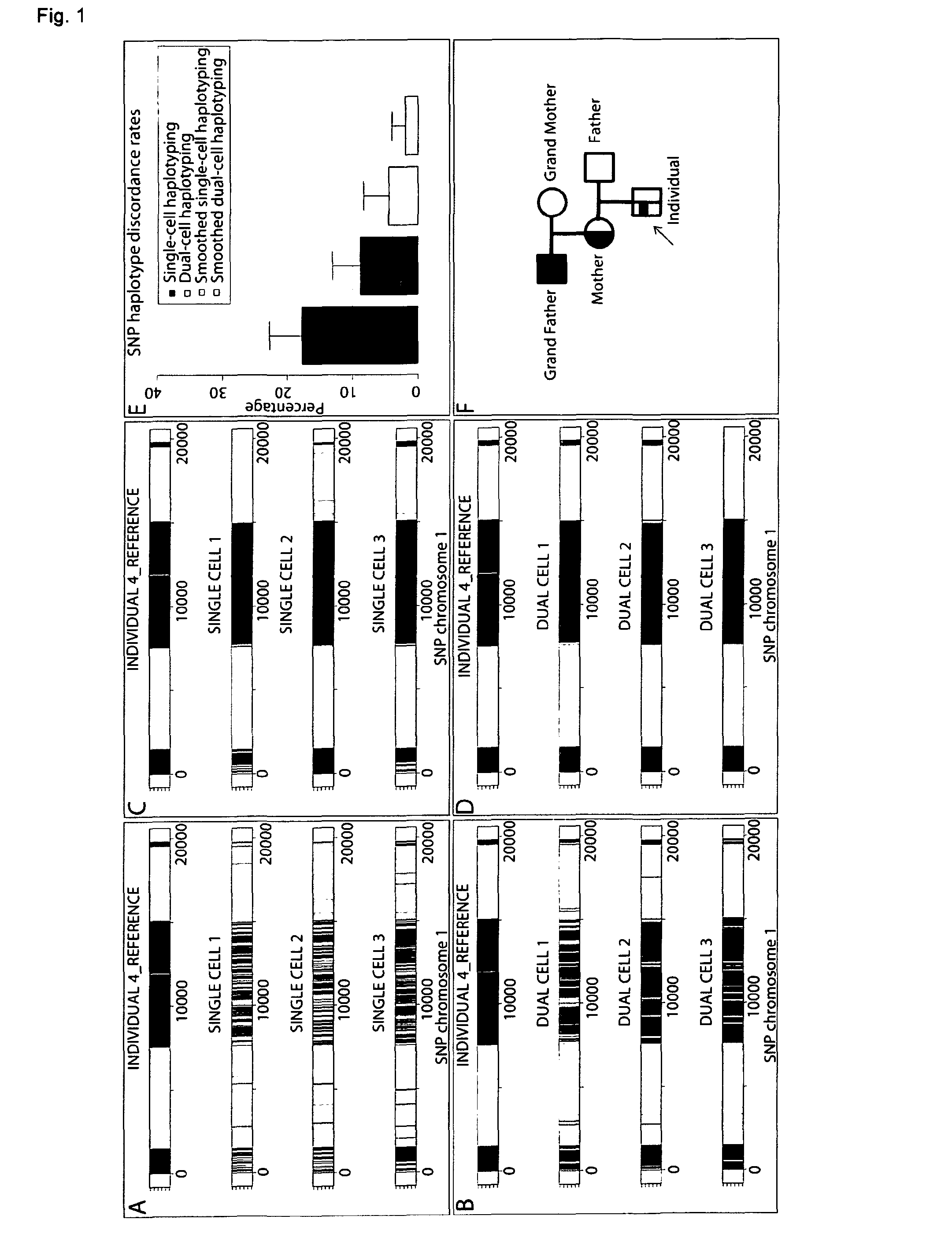Methods for haplotyping single cells
a single cell and cell technology, applied in biochemistry apparatus and processes, instruments, library screening, etc., can solve problems such as heterogeneity of tumors, and achieve the effect of reducing nois
- Summary
- Abstract
- Description
- Claims
- Application Information
AI Technical Summary
Benefits of technology
Problems solved by technology
Method used
Image
Examples
example 1
Haplotyping of EBV-Transformed Human Lymphoblastoid Cells
[0115]Genotyping of Single Cells
[0116]The method was established using four EBV-transformed lymphoblastoid cell lines derived from four different individuals respectively. Genomic DNA isolated from multiple blood cells of these individuals as well as MDA-DNA from three single cells per cell line were hybridized to Affymetrix 250K SNP-arrays. The obtained SNP-probe intensities were interpreted by three different algorithms—Dynamic Model (Di et al. 2005), BRLMM and Birdseed—that are optimized for typing SNPs in diploid genomes not subjected to MDA, allele drop-out (ADO) or preferential amplification (PA).
[0117]SNP-typing accuracy of the MDA single-cell DNA was determined by aligning the single-cell genotypes with the reference genotypes obtained from the corresponding non-amplified genomic DNA. Although the different algorithms had minor effects on the concordances of the single-cell homozygous SNPs with the reference SNPs, a si...
example 2
Haplotyping of Human Blastomeres
[0131]To test whether this single- and dual-cell approach for haplotyping lymphoblastoid cells also works on human blastomeres, the grandparental allelic sequences on the paternally inherited autosomes in three single blastomeres from the same embryo were determined. This male embryo resulted from assisted reproductive technology applied for preimplantation genetic diagnosis (PGD) because the couple wished to circumvent the paternal transmission of a 22q11 deletion to their child. FISH-analysis on two additional blastomeres revealed that this embryo carried the 22q11 deletion (data not shown). We were able to confirm this FISH-result by reconstructing the haplotypes of the paternally inherited chromosomes in the three blastomeres.
[0132]By probe intensity-cluster graph analysis of SNPs located within the 22q11 deletion it was proven that the deletion occurred de novo on a grandmaternal allele in the father (data not shown). Haplotype reconstruction of ...
PUM
| Property | Measurement | Unit |
|---|---|---|
| Threshold limit | aaaaa | aaaaa |
| Processing properties | aaaaa | aaaaa |
Abstract
Description
Claims
Application Information
 Login to View More
Login to View More - R&D
- Intellectual Property
- Life Sciences
- Materials
- Tech Scout
- Unparalleled Data Quality
- Higher Quality Content
- 60% Fewer Hallucinations
Browse by: Latest US Patents, China's latest patents, Technical Efficacy Thesaurus, Application Domain, Technology Topic, Popular Technical Reports.
© 2025 PatSnap. All rights reserved.Legal|Privacy policy|Modern Slavery Act Transparency Statement|Sitemap|About US| Contact US: help@patsnap.com



